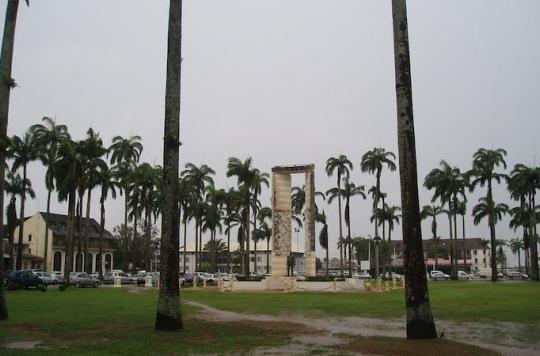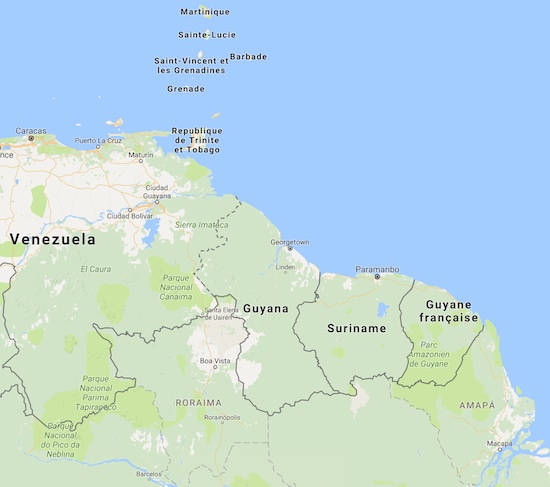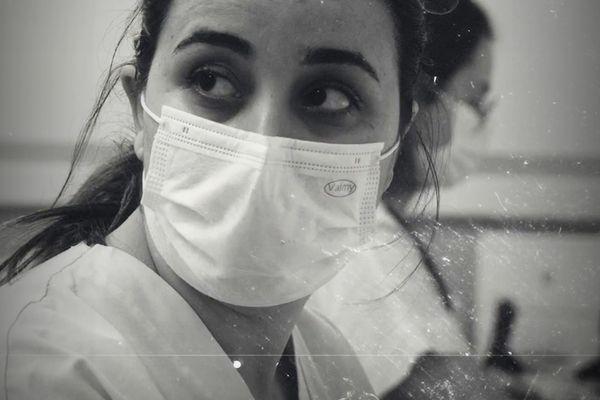An inter-union from Guyana has declared a general strike in the department. She denounces in particular the delays in the health system and the state of the population.

- Guyana is the largest department in France. It is approximately the size of Portugal.
- 4% of the French population lives in Guyana.
- In 2012, 71 practitioners were active in the department.
- One in two Guyanese is overweight or obese.
The largest department in France is in crisis. This March 27, Guyana goes on general strike, after a week of tensions. Under the leadership of the Guyanese Workers Union, which brings together 37 unions, the landlocked territory between Brazil and Suriname is crying out for it. In particular, the failing health system of the DOM. Yet 250,000 French people live more than 7,000 km from the metropolis. And they are tired of being discredited.
30 years late
Guyana’s delay in relation to the metropolis – but also in relation to the other overseas departments – reaches a structural level. Some 250,000 people live there. And yet, a fifth of the population is away from any liberal doctor. A medical isolation whose consequences are clear: life expectancy in Cayenne and its surroundings is two years lower than in France. No wonder that.
In addition to the lack of health professionals, there is a poor state of health. Guyana is “in the least favorable situation”, underlines a report of the Court of Auditors published in 2014. It evokes a double challenge: “a less developed health system and a population, often in an irregular situation, more vulnerable than ‘elsewhere “. Since that report, the situation has hardly improved.
In terms of human development, Guyana is almost 30 years behind the mainland. For example, there are four times fewer showers or bathtubs per home than in the most disadvantaged areas of France. Inequalities which have repercussions on the health of the inhabitants.

One in two overweight people
One in two Guyanese is overweight or obese. The fault is lower incomes than in mainland France and higher prices. Result: precariousness worsens without being controlled. It must be said that in the department, only 71 practitioners were active in 2012. Half are specialists. It is difficult, under these conditions, to benefit from appropriate care – including preventive (see box).
Being overweight is a known risk factor for cardiovascular illnesses. More frequent in Guyana, they are also less well treated. Thus, the death rate after a Stroke is 73% in Cayenne, against 28% on the Old Continent. The Court of Auditors points to “insufficient capacity for follow-up care and rehabilitation”, but also a lack of follow-up in town.
Another consequence of the lack of places in the hospital is the infant mortality very high. 9.2 out of every 1,000 births result in the death of the baby within one year. Too weak prenatal surveillance, numerous premature births – they are twice as frequent as in metropolitan France – the causes are multiple.
A high risk of infection
As if that were not enough, Guyanese people are additionally exposed to a wide range of infectious diseases. Malaria is endemic in the department, particularly near the Amazon, and resistance to artemisinin – the main treatment – is on the rise. If the illegal miners are the first victims, the parasite still caused 900 diagnoses in 2012.
The case of malaria raises particular difficulties. Chlordecone, an insecticide with recognized neurotoxic, carcinogenic and endocrine disrupting effects, has been widely used. At the time of the Zika, chikungunya and dengue epidemics, the question of the cost of the fight against mosquitoes is likely to come back to the fore.
It is a fact, Guyana is exposed to “a stronger infectious risk”, recognizes the Court of Auditors. Including when the causes are not environmental. For tuberculosis, for example, the annual rate is three times higher than in mainland France. It is not better for HIV: 59 cases per 100,000 inhabitants are diagnosed in the Antilles-Guyana zone, against 11 per 100,000 in mainland France.
Ministers will travel
The spending to deal with these many challenges is woefully inadequate. In 2012, each Guyanese had to pay 1,566 euros in sickness costs. Hospitals, they invest only 992 euros per inhabitant for the hospital, without even offering places in psychiatry. And unlike other overseas departments, these figures are not increasing.
Faced with this general crisis, the government did not send a minister there. The delegation, headed by a former prefect, was rejected by the collective of 500 brothers. Prime Minister Bernard Cazeneuve finally announced, on March 27, the visit of a delegation of ministers before the end of the week.
Prevention lagging behind
In Guyana too, it is the Health Insurance which takes care of prevention. Here again, the investment is largely insufficient in relation to the needs of the population. From 2009 to 2012, it devoted 6.4 million euros to preventive programs. For each Guyanese, this represents 3 euros per year, against 8 euros in Guadeloupe. Thus, the colorectal cancer screening program is limited to an envelope of 40 cents per inhabitant. In the case of breast cancer, the difference varies from single to double between Guyana and Martinique.
.















